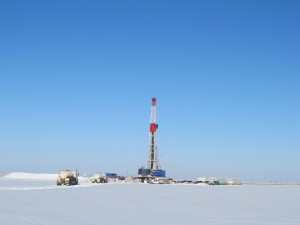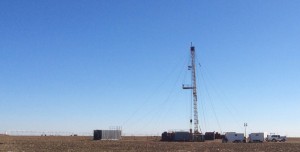Phase III
The final phase of SWP’s carbon storage project entails the intensive study of a large CO2 flooding operation In response to the U.S. DOE/NETL’s Carbon Capture, Ut ilization, and Storage (CCUS) program objectives. In October 2013, SWP finalized plans with an industrial partner, Chaparral Energy (CELLC), to began characterization and monitoring in the Farnsworth Unit of the Texas panhandle.
At the net CO2 injection rate of 10 MMscf/d (~190,000 tonnes/yr), it will take more than five years to inject one million tonnes of CO2 into the target formation. During this time, the field operator will maintain the CO2 injection at the site, with goals of both maximizing sucess of the enhanced oil recovery project and facilitating the associated evaluation of storage capacity and CO2 monitoring efficacy. A relatively standard EOR design is anticipated. SWP will assess the storage capacity, evaluate portability of results, and analyze the applicability (transferability) of results with respect to other EOR fields. The project will also provide SWP with a unique opportunity to improve monitoring, verification and accounting (MVA) techniques.
The SWP will use a variety of techniques including monitoring, simulation and other analysis methods to evaluate the effectiveness of the storage operation. Monitoring techniques will include a variety of geophysical methods, engineering analyses, monitoring of groundwater and soil data, and detailed characterization of several wells that will have a great amount of core and log data collected specifically for this project.


